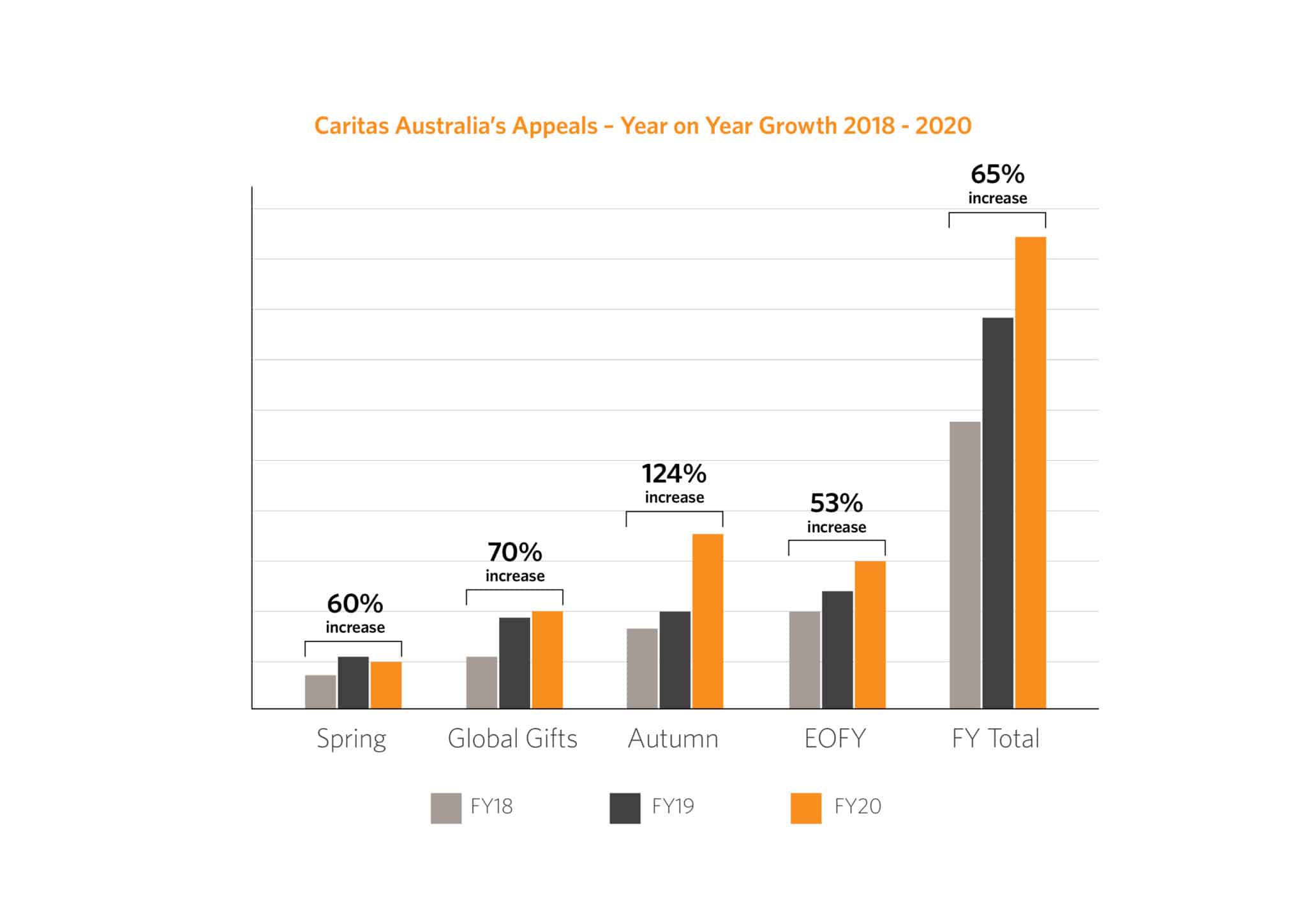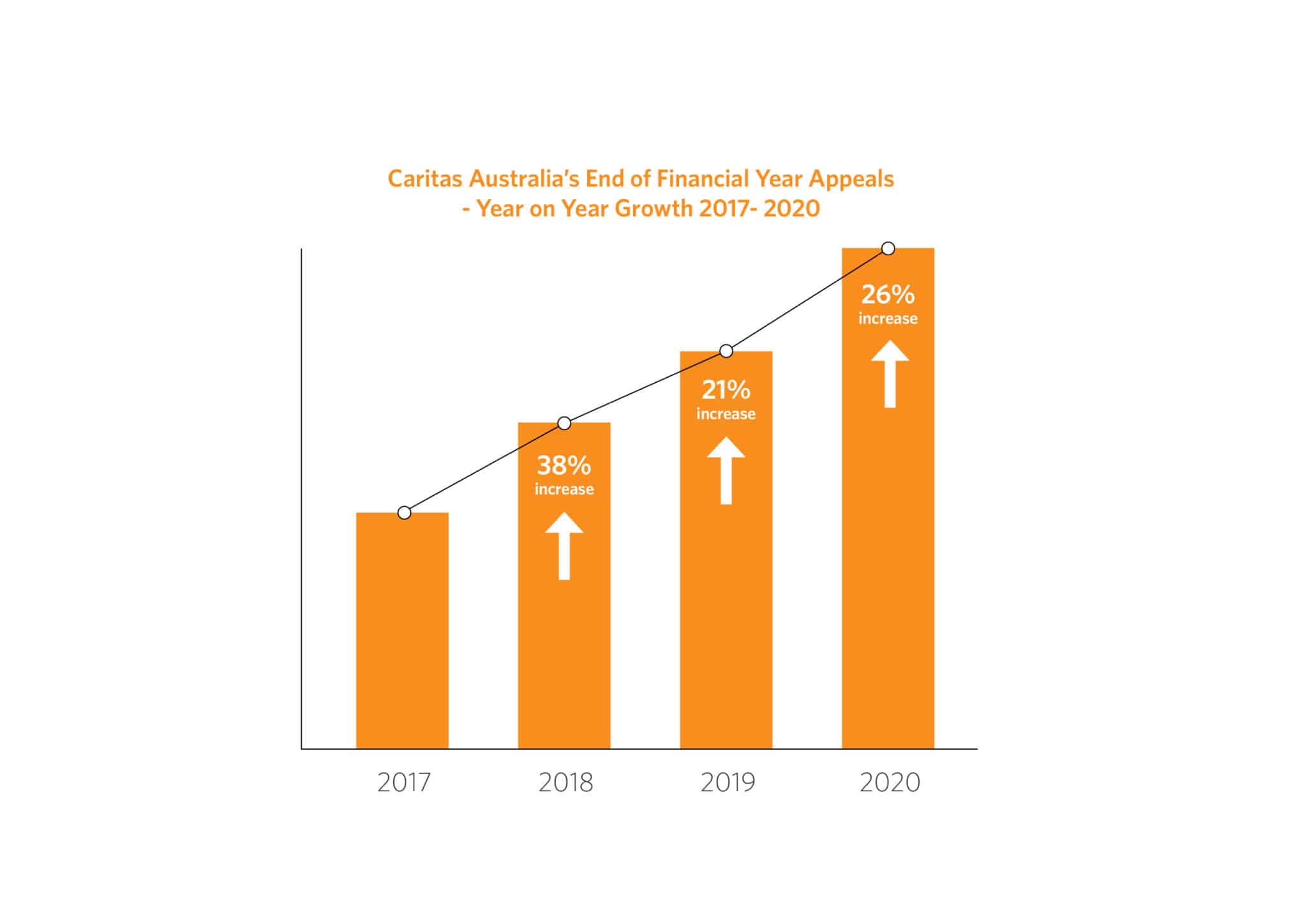
What makes a good Direct Marketing program?
– by Catherine Braybon, Account Strategy Director of Marlin Communications. This article was written for F&P magazine.
Good appeals come from good creative ideas combined with a good execution. While we might think ideas get plucked out of the sky, or thought of in our sleep, or better still when we are relaxed on a beach, the best ideas actually come from somewhere much more prosaic: a plan.
A process with specific steps and plenty of discipline will lead to the creative outcomes that drive donor action. Marlin Communication’s Founder and Co-Director once said to me, “No one ever came up with a good creative idea without a process.”
I want to share how this process has helped Caritas Australia succeed with their Direct Marketing program by repeatedly exceeding targets and growing year on year. The process goes beyond simple best practice DM development checklists (ie. using a Johnson box and a P.S.) to cover objectives, strategy and tactics.

Across all Caritas Australia’s appeals have seen year on year growth.
For me, working with Caritas Australia is a labour of love. Caritas Australia has been part of my life since I was a child, growing up Catholic and going to Catholic school. We were exposed to their work in the developing world, reinforcing the Catholic teachings around justice and love for one’s neighbour.
But, as we all know, love of a charity and the good that they do isn’t enough. Across the board charities do good work, but how they communicate that work is what drives people to take notice and feel compelled to donate.
Easily said, but what are the keys to creating communications that inspire action?
Let’s break it down.
Set a clear objective
Objective is knowing what you want to achieve, what stories you want to tell, what angle you want to take and the audience you are targeting. As Caritas Australia’s agency partner, these objectives come to us in a brief. The very nature of a brief is that it imparts knowledge from one party to another, and this essential ingredient ensures we are aligned.
Know thy audience
The team at Caritas Australia have done their audience homework. They recently invested in audience analysis to ensure they have a deep understanding of who they are talking to and we use those insights to drive segmentation and targeted <asks>.
Knowing the audience, and knowing how we want them to think and feel creates the groundwork to develop effective messaging. It should speak to their hearts, satisfy their minds and provide the strongest case to donate. Good audience insights will give us the information to do that.
Extra tip: Keep it clean
Clean, organised data gives you power to target, segment and ensure you are communicating the right message to the right people. Make this a priority!
Develop a clear strategy
Once you have an objective, you need a campaign strategy. That means defining what you want to say, how you want to say it, when you want to say it and where you’ll deliver the message. Your strategy creates clarity and defines the problem you want to solve. We crystallise this strategy in a single-minded campaign proposition.
This proposition becomes the cornerstone of the campaign, the benchmark by which everything from that point is compared. This requires a commitment to stay the path and keep coming back to the proposition to ensure creative ideas are worth pursuing. It gives us clarity by letting us ask if the idea or messaging is ‘on prop’. Yes? Let’s move forward. If not? Let’s rethink.
An example of this was the pivot that Caritas Australia made for their EOFY campaign in 2020. We had begun the process of developing their appeal, with a story of hope about a woman called Martina, who had escaped domestic violence with her six children and re-trained with the help of Caritas Australia and its partners. It was a powerful story about a woman rebuilding her life and creating a better future for her family thanks to the obvious role of the donor. The type of case study that makes for a great appeal.
But it was evident with the growing pandemic that this story would not resonate while everyone was consumed by the news of the coronavirus, so we changed tack quickly. Our proposition focused on what Caritas Australia was doing on the ground in the countries where they work to help prevent the spread of COVID-19.
A pivot like this was employed by many charities this year with success, however the thing that set Caritas Australia’s campaign apart was their discipline of tying the messaging of their program work with the donor’s role in protecting people during the pandemic. We focused on hygiene, health supplies and prevention education. We drew from the donor’s own experience of the pandemic and crisis, and explained how much harder it would be for people living in vulnerable communities. We emphasised the fact that people in these communities don’t have the knowledge and resources to fight this alone: that they need our help “now more than ever”. This was the strategy we set when we developed a new proposition following the pivot.
Caritas Australia and its partners were already on the ground, and with the support of the donor, their assistance could be immediate. We were able to strengthen their brand, and their Catholic identity of justice and compassion. We saw a response rate increase from 11% in 2019, to 23% in 2020.
Their success wasn’t limited to this EOFY appeal. Caritas Australia has seen year on year growth engaging Marlin, using the same strategic approach.

The overall increase for the EOFY campaigns (from 2017 to 2020) has more than doubled their revenue.
Think of the integrated experience
Caritas Australia’s engaging beneficiary stories of empowerment and hope are mostly captured after a solution has been provided. We often can’t return to these (internationally acquired) case studies for further insights into their lives. From an appeal perspective, this makes the disciplined approach more imperative. We know what type of content we need to capture, as we can’t just rely on the audience to draw a connection between the story and their role. THIS is where the process makes its impact felt. We avoid throwing everything at the donor to see what sticks, and instead create clarity and compelling calls to act that are aligned to the donor’s values.
DM is just one (very important) piece to a much wider donor experience and it should be integrated as part of a campaign. The campaign needs to come to life on your landing pages and donation pages, your eDM journey and social posts. Remember, the DM pack works as one touch point of many during the donor engagement process.
If you are asking for more and not thinking about how that feels for the supporter, then it’s likely your revenue will decline. Saying thank you, providing insights into how donors’ money has helped save lives and showing the impact of a gift establishes trust and credibility. Caritas Australia has invested in their donor care program because they know it’s an imperative. It has also contributed to the year on year growth and success they’ve had with their appeals.
The execution and project management of the campaign is paramount, including a deep understanding of the content and holistic view of the communications. We are fortunate to partner with the Caritas Australia’s team who have all their ducks in a row. From stakeholder engagement and attention to detail, with a pinch of love in all they do. Their own passion for the cause is hard to measure but it’s evident in their dedication and commitment to the process.
Consider all stakeholders
Ensuring that your campaign is a success has many factors and one that sometimes gets overlooked is internal stakeholders. We have worked with Caritas Australia to discover and implement effective and efficient ways to ensure they consult with their stakeholders at key milestones in the project to ensure that the rollout of the creative assets is not held up in any way. Getting internal approvals takes time, so make sure you plan for this in your appeal development.
In summary
I know first-hand how this process works, how it creates integrated campaigns that ensure revenue growth, and creative ideas that penetrate the market. Stick to the process and be disciplined. Create a compelling proposition, and keep returning to it to ensure you stay the path. Hold strong. Know who you are talking to and integrate your communications so that the touchpoints make sense to the donor and enrich their experience.
If you would like to work together on your direct marketing strategy or campaign, please get in touch.

